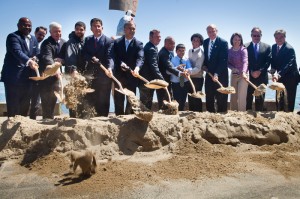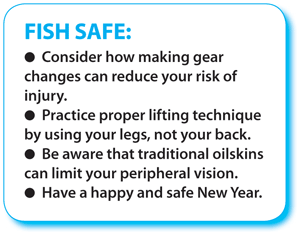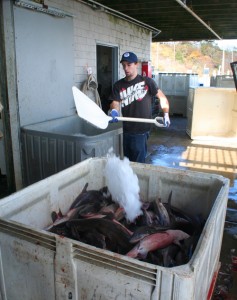NEW BEDFORD, MA – State and congressional dignitaries, led by Massachusetts Gov. Deval Patrick, participated in a ceremonial groundbreaking on May 6 for the New Bedford Marine Commerce Terminal, the first facility in the nation designed to support the construction, assembly, and deployment of offshore wind projects. “Today, we’re celebrating the birth of the offshore …
Category: 2013
Guest Column – Wind farms: Ecosystem effects differ depending on species, seafloor features
As the siting of ocean wind energy projects continues along the East Coast, many fishermen are left wondering how wind energy development will affect fishing resources. What is involved in testing an area for a wind farm and installing the turbine array? How will the underwater drilling, jet plowing, cable laying, and turbine installation affect …
EDITORIAL – Wind farms coming: It’s time to tune in
With the crises enveloping the groundfish, scallop, lobster, and northern shrimp fisheries, everyone in the Northeast commercial fishing industry is exhausted. It’s understandably difficult for people to even think about redirecting time and energy to wrap their minds around one more threat to the future. But we must. After years of talk, the US is …
SAFE-BOAT SMART-BOAT: Know, maintain, register your EPIRB
by Fred Mattera – EPIRB requirements apply to all commercial fishing vessels operating more than three nautical miles from the coast of the US. Vessels 36′ or greater in length must have on board a float-free, automatically activated Category 1 406 MHz EPIRB stowed where it can float free if the vessel sinks. Vessels less …
FISH SAFE – Prevent flooding: Keep an eye on your hatches
by Ann Backus – On Feb. 4, the 47′ Capt R M Chace began flooding off Chatham, MA. This story had a good ending. All four crewmembers donned survival suits and were rescued by personnel from the local Coast Guard station. The boat was dewatered and towed to port, the catch was offloaded, and the …
SAFE-BOAT SMART-BOAT: Using flares – Safe handling, firing, training
by Fred Mattera – I am often asked what to do with old, expired flares or if I want them. Actually, I do take and use them to conduct hands-on flare training. I also tell captains to consider keeping an expired flare kit in a container marked “for training purpose only,” distinguishing them from the vessel’s …
FISH SAFE – Students redesign knives, banders, oilers
by Ann Backus – In my last article (CFN November 2012), I described an industrial design class at the Rhode Island School of Design (RISD) in which students were asked to innovate gear for the lobster industry that would be both serviceable and reduce the risk of injury. This process, called “prevention through design” in …
New England council adopts river herring catch caps
HYANNIS, MA – Fishermen who use midwater trawls or bottom trawls and land more than 6,600 pounds of Atlantic herring will need to pay extra attention to river herring and shad bycatch in the future. During its late September meeting here, the New England Fishery Management Council adopted area-specific and gear-specific catch caps for a …
EDITORIAL – Northeast fisheries merit federal support
The tremendous importance of Northeast fisheries to local, state, and national economies is the main message of “Fisheries of the United States 2012,” the latest installment of the annual report from the National Marine Fisheries Service that compiles statistics on landings and their value for ports around the nation. The document is a must-read, especially …
Red’s Best partners with nonprofits, NAMA to build demand for local fish
CHATHAM, MA – The mechanical whir of the Chatham Fish Pier lift is swiftly followed by a dull thud and whoosh as dozens of dogfish slide down the metal chute and into a large plastic tub. Devon Walsh immediately begins shoveling ice on top of the fish, while a digital readout keeps tabs on their temperature, …














 Updating...
Updating...